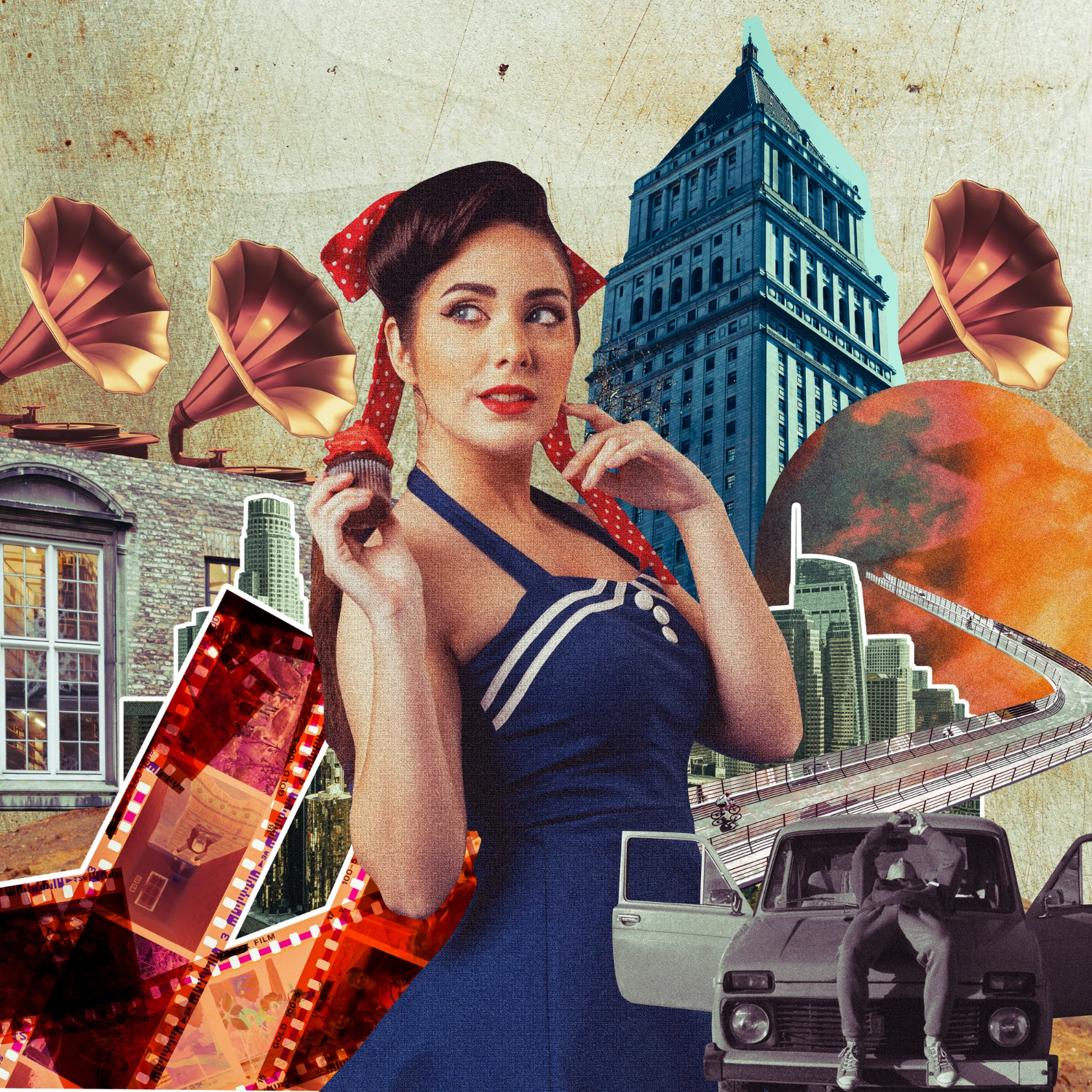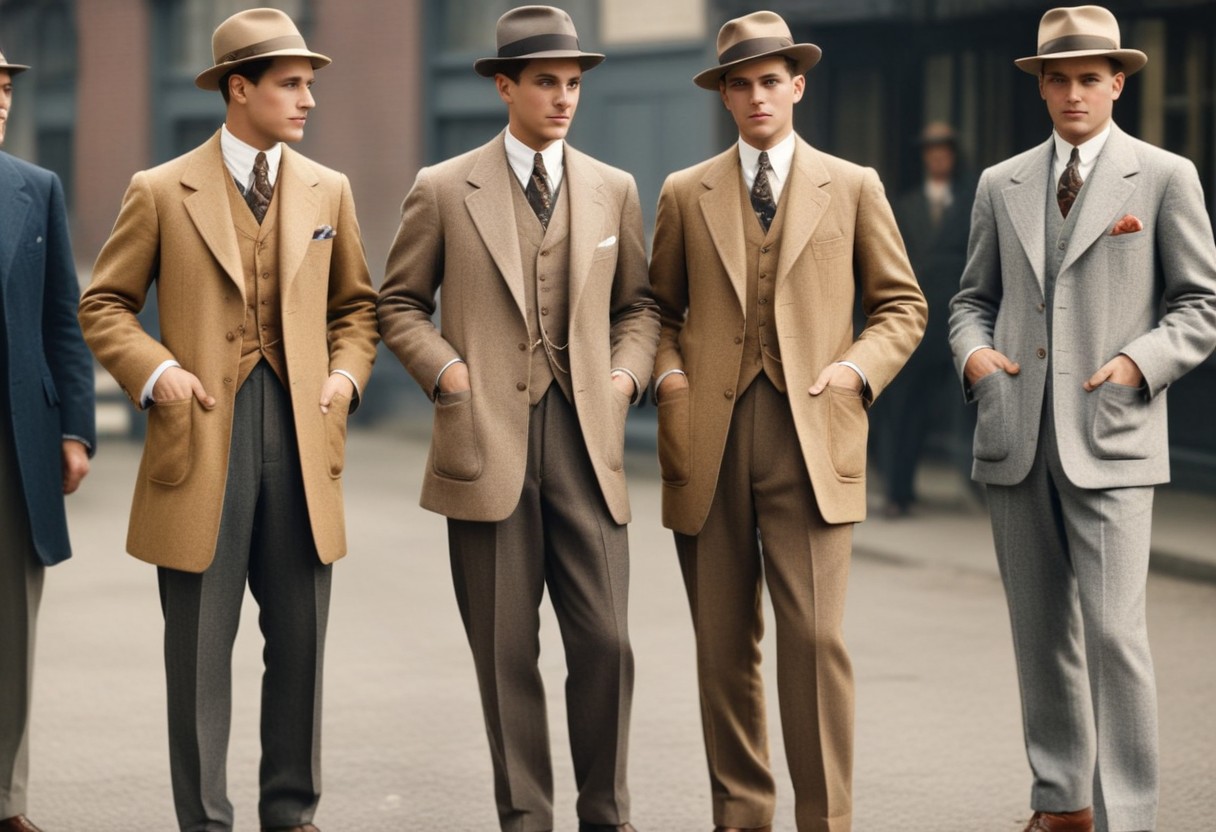The Revolutionary Era of 60s Fashion
60s fashion was innovatively vibrant and overall depicted a sense of revolutionary mindset with a significant shift in trends reflecting the era’s cultural, social, and political transformations. We just cannot overlook the reality that 60s fashion was incredibly diverse, with various styles and trends emerging throughout the decade. The era of the 1960s was characterized by several famous fashion movements, including:
- Mod Fashion: The Mod subculture had a big influence on fashion in the 1960s. Mod fashion was characterized by vibrant colors, geometric patterns, and sleek, minimalist designs. Women adored short hemlines, shift dresses, and A-line skirts, whereas males preferred tailored suits with slender outlines, bold patterns, and Chelsea boots.
- Hippie Fashion: Hippie dress became increasingly popular as the counterculture movement gained traction. Hippie fashion was defined by a more relaxed and bohemian style, with flowing fabrics, tie-dye patterns, bell-bottom pants, peasant blouses, fringed vests, and accessories such as headbands and peace signs.
- Psychedelic Fashion: With the rise of psychedelic art and music, fashion took on a psychedelic aesthetic characterized by vibrant colors, swirling patterns, and surreal designs. Psychedelic fashion embraced experimentation with fabrics and prints, incorporating elements like paisley, tie-dye, and optical illusions.
- Swinging London: London rose to prominence as a fashion capital in the 1960s, thanks to its vibrant and innovative fashion culture. Swinging London fashion was influenced by the Mod movement, with modern patterns, bright prints, and intriguing textiles. Designers like Mary Quant, who popularized the miniskirt, and labels like Biba and Twiggy exemplified this era.
- Space Age Fashion: With the excitement around space exploration, futuristic fashion gained popularity. Metallic fabrics, plastic materials, and sleek, space-inspired silhouettes were prominent features of Space Age fashion. This (out of the world) trend was characterized by mini-skirts, metallic dresses, go-go boots, and space helmets.

60s Fashion Women’s Wear
Women’s fashion in the 1960s changed dramatically, reflecting the dynamic societal disruptions of the time. Here are some important characteristics of women’s clothing in 60s fashion:
- Mini Skirts: In the early 1960s, designer Mary Quant introduced the short skirt, which changed women’s fashion. Mini skirts and dresses, with low hemlines that often reached above the knee, were symbols of the decade’s youthful and rebellious spirit.
- Pantsuits: Pantsuits rose to prominence in the 1960s as a trendy alternative to dresses and skirts. Pantsuits included cut pants teamed with a matching jacket, giving ladies a smart and modern style. Pantsuits became especially popular for professional wear and formal occasions.
- A-Line Dresses: A-line dresses, with tight bodices and flaring skirts shaped like the letter “A,” were another popular style in the 60s fashion. A-line dresses were flattering on a wide range of body shapes and were commonly worn for both casual and formal events.
- Shift Dresses: These simple, sleeveless dresses had straight lines and a loose fit, making them ideal for everyday use. Shift dresses frequently featured strong geometric patterns or vibrant colors, reflecting the contemporary aesthetic of that era.
- Bohemian Chic: As the hippie movement gained traction, bohemian fashion became increasingly trendy. Flowing maxi skirts, peasant blouses, fringed vests, and ethnic-inspired accessories reflected the free-spirited and eclectic style of the era.
- Androgynous Styles: Fashion’s gender norms shifted throughout the 60s fashion, with androgynous styles becoming increasingly fashionable. Women embraced tailored suits, pantsuits, and menswear-inspired styles, undermining norms of femininity.
- Hairstyles and Makeup: Hairstyles in the 1960s ranged from sleek, geometric bobs in the early decade to long, flowing locks during the late 1960s hippy era. Dramatic winged eyeliner, strong eyeshadows, pale lips, and fake lashes were popular makeup trends during this time, representing modernity and beyond-the-age glamour.
- Accessories: Accessories were vital in completing the 60s fashion. Women wore bold accessories like large sunglasses, heavy jewelry, bright scarves, and headbands.


60s Fashion Men’s Wear
Men’s fashion in the 1960s witnessed considerable transformations, reflecting the societal shifts and influences of the era. Here are some important characteristics of men’s clothing in 60s fashion:
- Bold Patterns and Colors: The 1960s were about vivid, eye-catching designs and colors. Mod-inspired clothing typically featured geometric themes, stripes, checks, and vibrant colors, representing the spirit of young culture.
- Peacock Revolution: The “Peacock Revolution,” a push for more colorful and expressive menswear fashions, took place in the latter part of the 1960s. Men began to experiment with vivid patterns, vibrant elements, and ornamentation like ruffles, fringes, and embroidery, challenging the conventional standards of masculinity.
- Slim Silhouettes: The 60s fashion marked a shift away from the boxy, conservative designs of the previous decade and toward a smaller, more streamlined silhouette. Tailored suits with small lapels and tapered trousers became popular, partially because of the impact of the mod subculture.
- Casual Wear: Casual wear grew more popular in the 1960s when men adopted relaxed and informal styles for daily wear. Polo shirts, crewneck sweaters, casual pants, and denim jeans became fashionable, giving men new ways to dress outside of formal occasions.
- Accessories: Accessories were crucial in completing the 1960s men’s outfit. Men wore thin ties, slim ties, pocket squares, aviator sunglasses, and mod-inspired headwear like the pork pie.


60s Fashion Children’s Wear
Children’s fashion in the 1960s mirrored many of the trends and influences seen in adult fashion then, with some distinctive characteristics geared to younger tastes. Here are some major characteristics of children’s clothing in the 1960s:
- Miniature Versions of Adult Styles: Children’s 60s fashion attire often mimicked the popular fashion trends among adults, including mod fashion, hippie styles, and preppy designs. Miniature copies of mod dresses, fitted suits, and casual separates were popular, allowing children to mimic the looks of their parents and older siblings.
- Playful Styles: Children’s clothing of the 1960s highlighted comfort and playfulness. Casual clothing like t-shirts, jeans, and shorts were fashionable among boys and girls. Girls frequently wore pinafore dresses or rompers to play, while boys preferred polo shirts and Bermuda shorts.
- Mod Clothing: The mod movement had a big impact on children’s 60s fashion. Mod-inspired children’s apparel featured bright colors, geometric patterns, and clean lines. Girls wore tiny skirts, shift dresses, and vividly colored tights, while boys dressed in slim-fitting trousers, button-down shirts, and tailored jackets.
- Bright Colors and Fun Patterns: Children’s clothing in the 1960s embraced the vibrant colors and playful patterns of the era. Bright hues like yellow, orange, and turquoise were popular choices, along with bold prints such as stripes, polka dots, and florals. These cheerful colors and patterns reflected the optimism and energy of the decade.
- Vintage-Inspired Outfits: Some children’s clothes of the 1960s were inspired by historical fashions from previous decades. Retro-inspired gowns with puffed sleeves and Peter Pan collars for girls, as well as sailor suits or knickerbocker outfits for boys, drew inspiration from classic children’s fashion while combining modern aspects.
- Iconic Accessories: Accessories played an important role in children’s fashion, bringing a playful and quirky touch to clothes. Girls wore colorful headbands, bows, and hair clips, while boys donned caps, suspenders, and novelty ties. Shoes for both boys and girls frequently had amusing styles, such as Mary Janes, saddle shoes, and sneakers.


60s Fashion Icons
Several major fashion icons emerged in the 1960s, leaving a lasting influence on the industry and inspiring designers and fashion fans to this day. Some of the most notable fashion icons of the 1960s are:
- Twiggy: Twiggy (real name Lesley Lawson) was one of the most recognizable models of the 1960s. Twiggy, known for her ultra-slim frame, doe-eyed appearance, and pixie hairdo, personified the youthful and androgynous Mod style. She became a fashion icon and symbol of Swinging London.
- Marilyn Monroe: Marilyn Monroe, despite her prime in the 1950s, continued to influence fashion in the 1960s and after. Her trademark bombshell-look, which included curve-enhancing costumes, red lipstick, and beautiful accessories, is still a lasting symbol of femininity and charm.
- Audrey Hepburn: Although Audrey Hepburn rose to prominence in the 1950s, her impact on fashion lasted into the 1960s. Hepburn’s style, as shown in some films like ‘Breakfast at Tiffany’s’ and ‘Charade’, inspired the ‘little black dress’ and continues to be a lasting fashion icon.
- Jackie Kennedy: Jacqueline Kennedy, the First Lady of the United States in the early 1960s, was a fashion icon highlighted for her refined and timeless style. Her fitted outfits, pillbox hats, and immaculate fashion sense defined trends and inspired women’s fashion worldwide.
- Brigitte Bardot: Brigitte Bardot, a French actress and sex symbol, mesmerized audiences with her seductive beauty and feminine charm. Bardot’s casual yet sensual style, with tousled hair, cat-eye makeup, and figure-hugging garments, exemplified 60s fashion.
- Edie Sedgwick: Edie Sedgwick, an American actress, model, and Andy Warhol’s muse, rose to prominence in the New York City art scene in the 1960s. Sedgwick personified the era’s modern attitude with her bold fashion choices, which included mod-inspired shifts, striking jewelry, and dramatic eye makeup.
- Jean Shrimpton: Jean Shrimpton was another prominent model in the 1960s who helped redefine beauty standards with her long limbs, sharp features, and easy style. Shrimpton’s innate beauty and refined yet subtle fashion sense made her a popular model and style icon.




